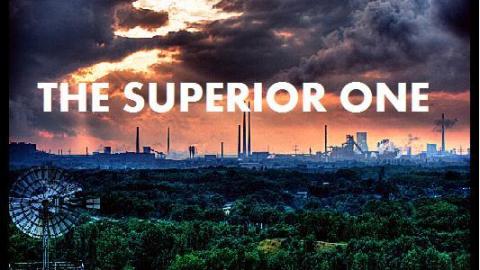Recognizing the Ideology Embedded in Nature Films

In September, in a speech at the Corto e Fieno Film Festival in Italy, award-winning science and environmental filmmaker Larry Engel reflected on the attributes that make for a successful documentary. In his remarks, posted below, he argued that successful filmmakers need to be especially mindful of the ideology that structures the narratives in their nature films. He encouraged his colleagues to shift away from the “Man vs. Nature” conflict theme that has dominated film narrative historically.
Engel, an Associate Professor of Film and Digital Media at American University, has shot, written, directed and produced dozens of internationally-recognized films across his 30 year career. Most recently, he was awarded the AAAS Kavli prize for broadcast science journalism as director of the PBS Human Spark series.
Below is a text of Engel’s remarks delivered at the festival in Italy where he screened his lastest film Potato Heads: Keepers of the Crop, a 25 minute independent film about humans’ centuries long love affair with potatoes — Matthew Nisbet.
Thank you. I am excited to be here with you and to have the opportunity to share some thoughts about what constitutes an environmental film and environmental filmmaking. And thank you for your enthusiastic reception of my film Potato Heads: Keepers of the Crop.
I’m told that I am an environmental filmmaker. I am indeed an associate director of American University’s Center for Environmental Filmmaking. But does that mean that I make films about the environment? If so, it sounds really boring to me.
Does it mean that I’m aware of the environment, concerned about it? That I adhere to some sort of environmental code or conduct as a filmmaker? That sounds more interesting to me. In fact, I have made and do make environmental and wildlife films, among other genres.
And it is true that I am the co-author of an important work on what many call “green” filmmaking called “The Code of Best Practices in Sustainable Filmmaking.” This short piece and its companion carbon trackers and checklists is easily found on our website www.sustainablefilmmaking.org. This Code has been endorsed by the International Documentary Association, and the University Film and Video Association in the United States. It also has been adopted and adapted by several European film commissions. It was produced through the support of American University’s Center for Social Media, Center for Environmental Filmmaking, and the internationally recognized Filmmakers for Conservation.
So, as an author/filmmaker, I should practice what I preach, and preach what I practice. I did so on my potato film to great success. We were able to save several thousand dollars by following the code and using its trackers.
However, I actually think that all movies are environmental films of one kind or another. No film can be made without either an overt message about the environment or a subtle, sub-textual one. Filmmaking depends on locations, places of being, to help tell their tales.
Thus all cinema takes place in some sort of environment. Even in animation or experimental films. Whether fiction or documentary, action, journeys, emotions, and meaning take place in and are derived from, a variety of locations, environments. Characters or subjects live and carry on their lives in them.
Therefore some relationship exists between characters on screen to the environments within which they reside. Further there is a relationship of some kind established between the viewers and the environment within which they also are immersed.
The relationship between human and nature is a fundamental one not only in film and novelsbut in real life as well. It is true though that texts may be explicit or implicit in their reference to and use of the environment. In fact, the great novelist and theorist Umberto Eco uses a metaphor from nature in a book that I have used in my classes since it was first published in 1994. The title alone establishes the metaphor that Eco uses to discuss the wonderful relationship among author, text, and reader – “Six Walks in the Fictional Woods.”
In it he establishes that the woods are an apt metaphor for the journey that we take when reading or seeing a text: “Woods are a metaphor for the narrative text…. A wood is a garden of forking paths. Even when there are no well-trodden paths in a wood, everyone can trace his or her own path, deciding to go to the left or to the right of a certain tree….”
By establishing a metaphor from nature – the woods – to frame his discussion, Eco has explicitly confirms that texts (books, films, paintings) are environmental at their fundamental base.
So, if all films are environmental, then what constitutes an “environmental” one? I would suggest that there are two main elements that should determine the “environmental-ness” of a film. One is not so easy to determine and not often, at least today, pursued; namely, is the production of that film sustainably conscientious? Has the production team from beginning to end, aimed to reduce its carbon footprint, its overall negative affect on the environments, or locations in which the film has been made?
As a filmmaker who has been to exotic and wonderful places on all seven continents, I have worked hard to do what I can to minimize my affect on those places. Others do not necessarily share my concerns though. When mountaineering, we practice “leave no trace.” This quotation comes from the same-named organization that represents a center on outdoor ethics. I try to produce my films in a similar way.
Several years ago I was able to make a film on the Gorner Glacier in the shadows of Matterhorn, I should say the Monte Cervino, with GiovanniBadino, a glaciologist with the La Venta exploration team; he is based in Milan.
Descending beneath the ice into caves carved by summer melt, we came across splotches of brown dirt. It turned out that it was not dirt but human feces, left on the ice by generations of mountaineers, skiers, and others who traversed the hut system on the glacier. It was a seminal moment for me, as well as a rather disgusting one.
We, each of us, impact our world no matter what we do. Even in death we affect our environment. Among the most polluted places on earth are cemeteries because of all the chemicals used both in old and new embalming techniques. I know this may run counter to our cultural and religious practices, but it is a sad fact nonetheless. What may be harmless in one environment may be harmful in another.
In the middle of one of nature’s most beautiful and haunting environment was the personal detritus of humanity. Further it was inadvertently polluting drinking water for towns below the glacier. From that day forward, I vowed to leave as little behind as I could.
The second aspect of an “environmental” film that I would like to suggest to you has an ideological dimension to it. Underlying all films, texts, communications, is ideology. Simply put, under the narrative text, supporting it through its framing structure, is the way in which the author sees the world, thinks about things. In other words, the author’s point of view toward nature, the environment.
In so many of our films and stories, we pit humans against nature, an ideology of conflict, perhaps of superiority and dominance, or winning and losing. In fact, eminent domain in the United States has been a critical ideology from our earliest days allowing us to “tame the west” and dominate cultures that had been on the land far longer than we. Today it’s used by government and companies to grab land and homes from individuals for the alleged benefit of the many, for the “public good.” This ubiquitous dichotomy carries with it an ideology of domination and superiority over the land by humankind.
So, it seems to me that a truly environmental film must at its core take a different point of view from this fundamental one of conflict or competition. An ideology of respect or concern for, or maybe even only an acknowledgement of, the environment, “the place of being” – and its inhabitants must be at the core of such a type of film.
Again, regardless of the tale, is there an “environmentally-friendly” ideology supporting the text? We must do a better job of investigating, recognizing these ideologies for ourselves. Thus it is not necessarily that the story content itself makes a film environmental, though a film that focuses on environmental issues or wildlife and habitat clearly are environmental.
In other words, can there be a paradigm shift away from Human v. Nature that still allows us to create strong stories? Of that I’m not sure.
When I made my little potato film, which I was pleased to share with you, I thought a lot about these issues, even if they are not apparent in the film. Some of the content is environmental in nature. But we also followed our green code – used as few people as possible during production, rented hybrids where possible, and always respected our hosts and subjects as well as the land in the two rural communities in which we filmed.
We did not romanticize life on the Great Plains of the United States nor in the Andes of Peru. But we did respect the people and their cultures, and were proud to be able to share the joy they expressed over a simple yet important crop. I realize now that I was privileged to witness the ancient ceremonies still practiced by the local potato farmers in Peru. In their work, their lives, we were able to document a simple respect for the land, for the connection to the land by the people who live on it, and then to be able to share that experience with others not so lucky as we to go to such special places and meet such honest people.
We tend to live in a non-rural world where the connection to the land, to our environments, are minimized, avoided, even rejected. There is a new disease among us: NDD. Nature Deficit Disorder. There are children who cannot identify animals in nature, who do not know the sound that a bird makes. When brought outdoors to a forest, they are afraid, lost. Many doctors now argue that the explosion of asthma among children around the world is not only caused by pollution but also by not going outside to play in the dirt, to play in the real world.
That little girl in the Andean potato field pounding a mound of dirt with a rock is a beautiful reminder of what a real environmental film is. The little girls in the wagon in Barnesville, Minnesota so proud to be honored in the Potato Days parade are also a reminder of how important it is to know the land, know your food, know your neighbors including other flora and fauna that share your habitat.
Perhaps as we go headlong into the night, we will find a way to get back to the land, to the earth upon which we live and die, upon which we ultimately depend for our wellbeing, our very survival. Perhaps we will find a way to change our ways, our attitudes and behavior, and move from a world of consumption and greed to one of conservation and modesty. That would be good for the environment, and all its inhabitants.
Thank you so much for your time and consideration. I am now thinking that, as a result of the wonderful experience that I’ve had here including the great food, my next environmental film may be a celebration of pasta.
Grazie e buona fortuna,
Larry Engel
See Also:
Award Winning Filmmaker Discusses Bringing Science to Life on Screen





